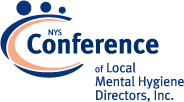NYS Conference of Local Mental Hygiene Directors, Inc. | An Affiliate of the New York State Association of Counties >
Hot Topics / Priority Issues
U.S. Surgeon General Murthy Ramps Up Addiction Battle
The incoming Trump administration has not outlined a detailed opioid policy, although Donald Trump during the campaign pledged to stop illegal drugs from flowing across the borders and to make sure people with addiction have “the assistance they need to unchain themselves.”
Even with the current health law, only one in 10 people in need of substance abuse treatment gets it.
“I want to be a voice for coverage,” he said. “With substance abuse, that couldn’t be more important.”
Murthy is only about halfway through his four-year term, so he could remain in office well into the Trump presidency. “This is my plan going forward,” he said of his determination to change the country’s approach to addiction. “I intend to keep serving as long as I can.”
“I’ve worked with people on both sides of the aisle,” he added.
And to turn this report into action, he will work with state and federal policymakers, families, community groups, schools, law enforcement, doctors and hospitals — and anyone else willing to pitch in to save thousands of lives and the $420 billion a year spent on abuse-related health care, criminal justice and lost productivity.
The report itself has three basic themes.
Addiction is a chronic neurological disease, not a moral failing or lack of willpower. That means it’s time to stop the “shame and misunderstanding,” the report says.
Prevention is key. Keeping teens in particular from trying drugs and alcohol vastly lowers the likelihood of addiction later on.
And treatment works. Not perfectly, but it works.
“We’ve got an evidence-based toolkit,” Murthy said. “The solutions for each community may vary, but it’s evidence-based.”
Murthy knows that to make the report a lasting part of the health care terrain — the way the 1964 tobacco report was — he’s got to “scale it.”
One focus will be on improving training so doctors can screen for — and treat — substance abuse. He’s already gotten a strong response from physicians to a letter he sent all of them this year urging them to tackle the crisis.
“It’s been fascinating feedback [from] clinicians who didn’t recognize the scope of the epidemic and the connection between their prescribing practices and the epidemic.”
He’s spent a lot of time traveling the country listening to stories — sometimes of recovery, too often of grief.
One stop Murthy made that brought home the depth of the crisis was in a tiny village in Alaska, called Napaskiak, which can be reached only by boat. It has fewer than 500 people — and a drug problem.
The village keeps medical supplies, including painkillers, in a small building no bigger than a room, he said. It was broken into multiple times, and the painkillers were taken. Finally, the villagers boarded it up. Then the thieves came in through the roof.
http://www.politico.com/story/2016/11/surgeon-general-addiction-drugs-231532




